The use of oriented strand board (OSB), a type of engineered timber featuring large wood strands that is made by compressing strips of wood in particular directions, has been listed as one of the rising interior design trends of 2020. Originally used in building construction as preliminary sheathing for floors, walls or roofs, the material has grown to be appreciated by designers and architects for its aesthetic qualities, random organic composure and recycled properties.


Casa Mac by La Errería in Alicante
Spanish architecture practice La Errería with offices in Alicante, Murcia and Madrid has built a number of new rooms from OSB in a new building set back from the original façade of the house in the historic centre of Alicante dating back to the beginning of the 20th century. The team kept the façade in order to respect the memory and the common facade composition of the street.
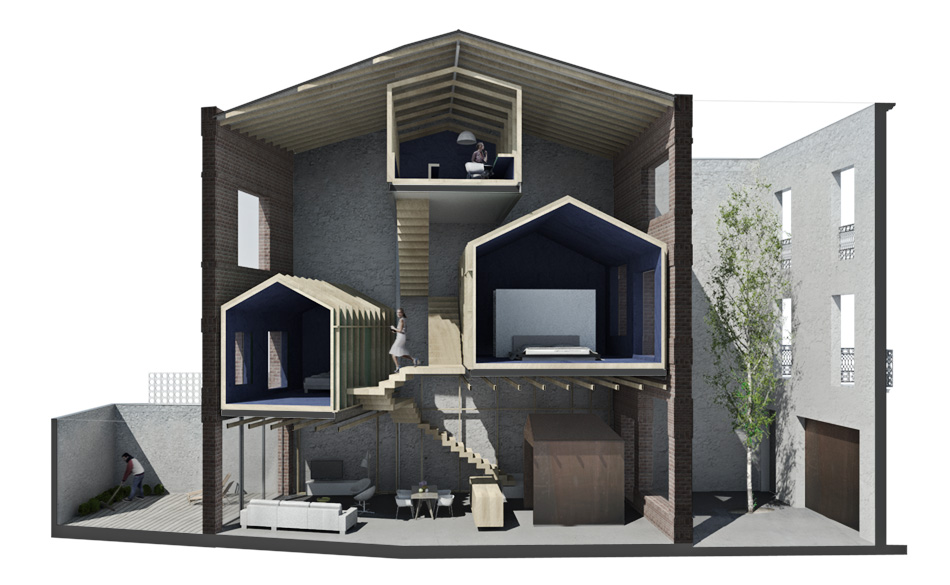
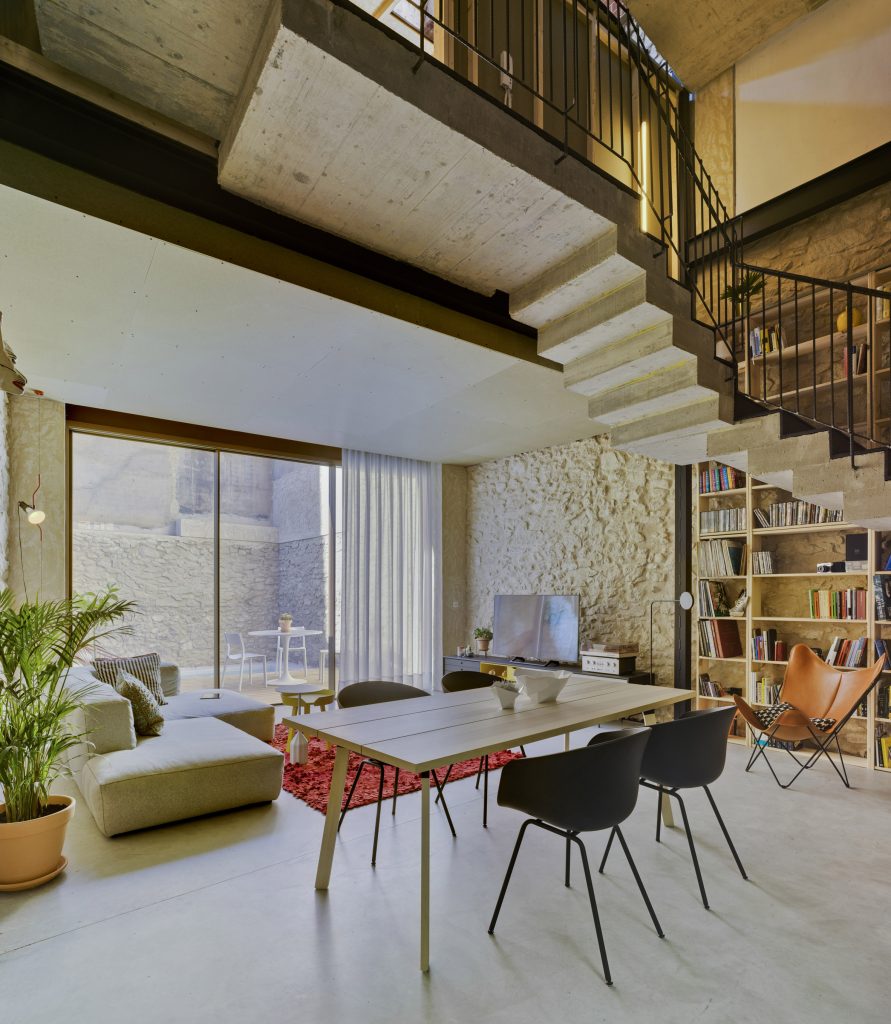
Casa Mac by La Errería in Alicante
Named Casa Mac, the project comprises several gabled boxes made of orientated strand board, which are situated on different levels within the frame of the house, while the ground floor accommodates an open plan kitchen, living room and dining area, as well as a bathroom concealed in a freestanding timber structure.
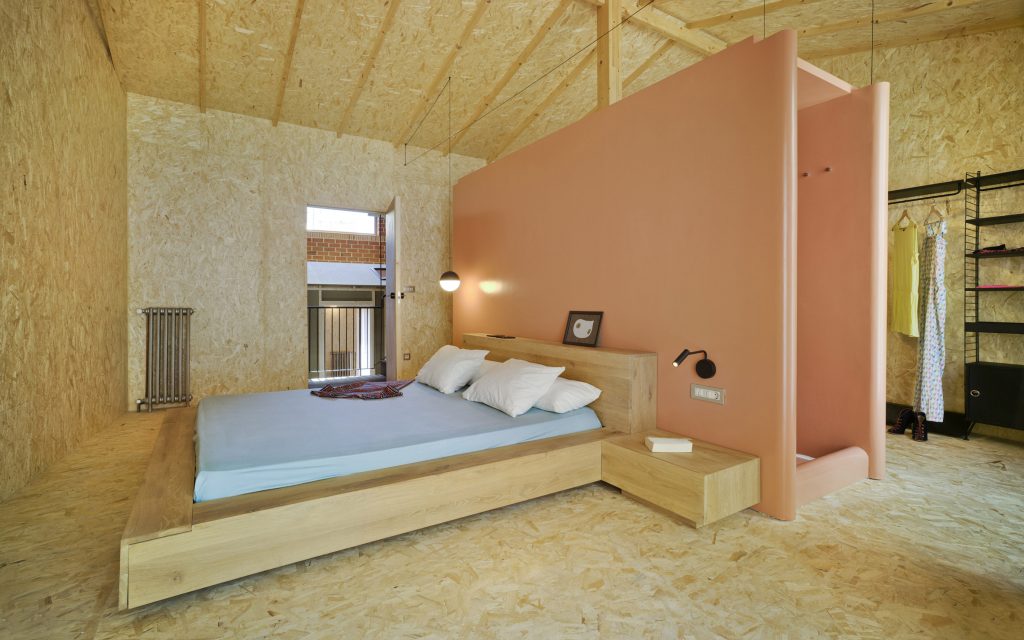
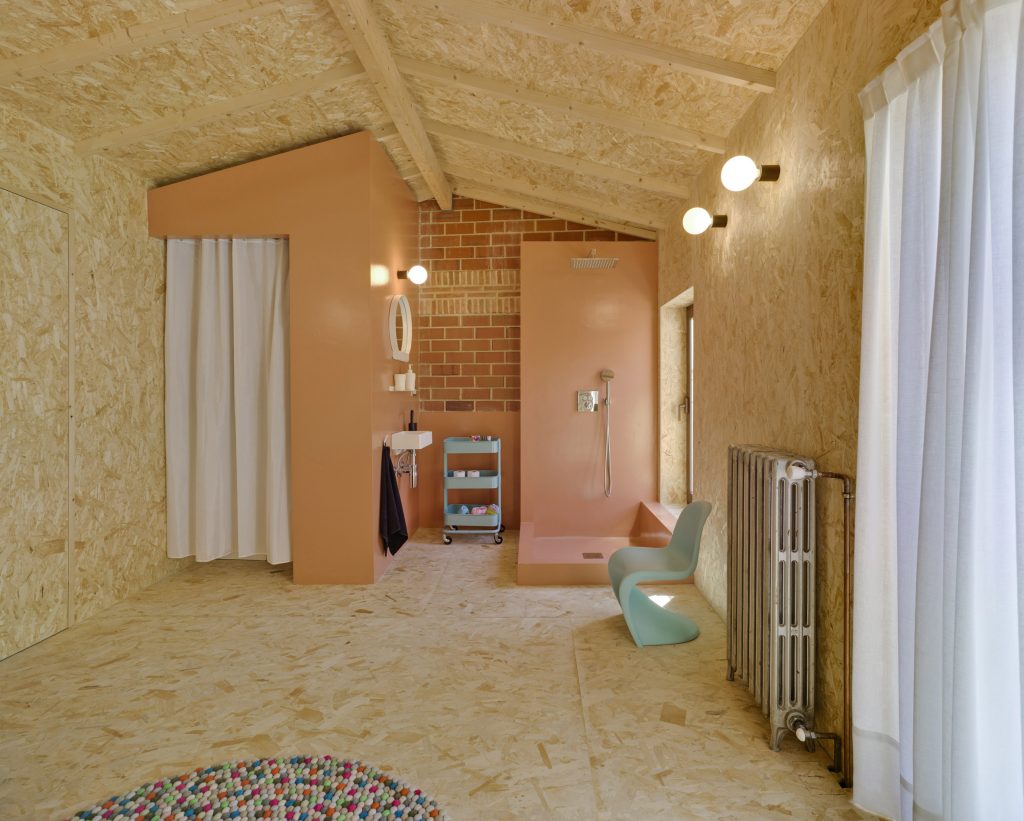
Casa Mac by La Errería in Alicante
Two of the three discreet shells house bedrooms – a single bedroom featuring an exposed brick wall of the external structure on the lower level and a master bedroom. Each room has an adjoining toilet cubicle and a shower unit.
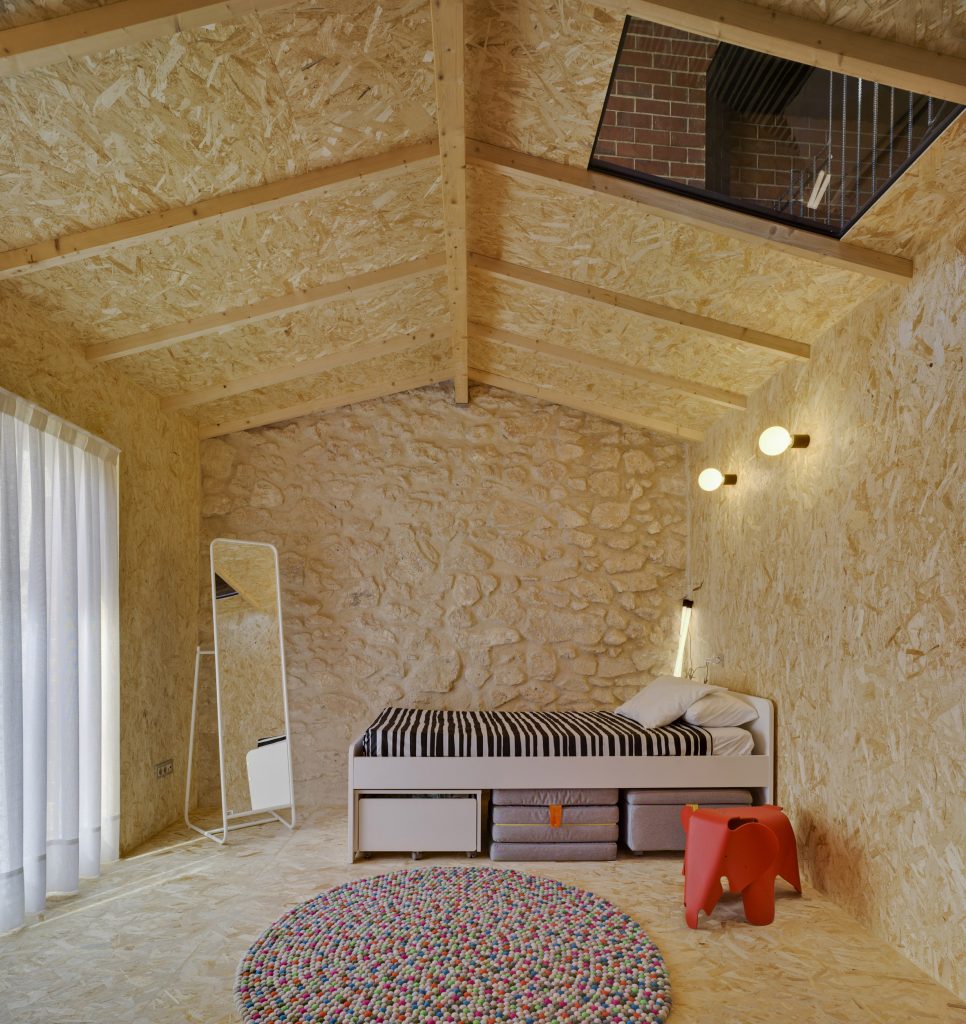
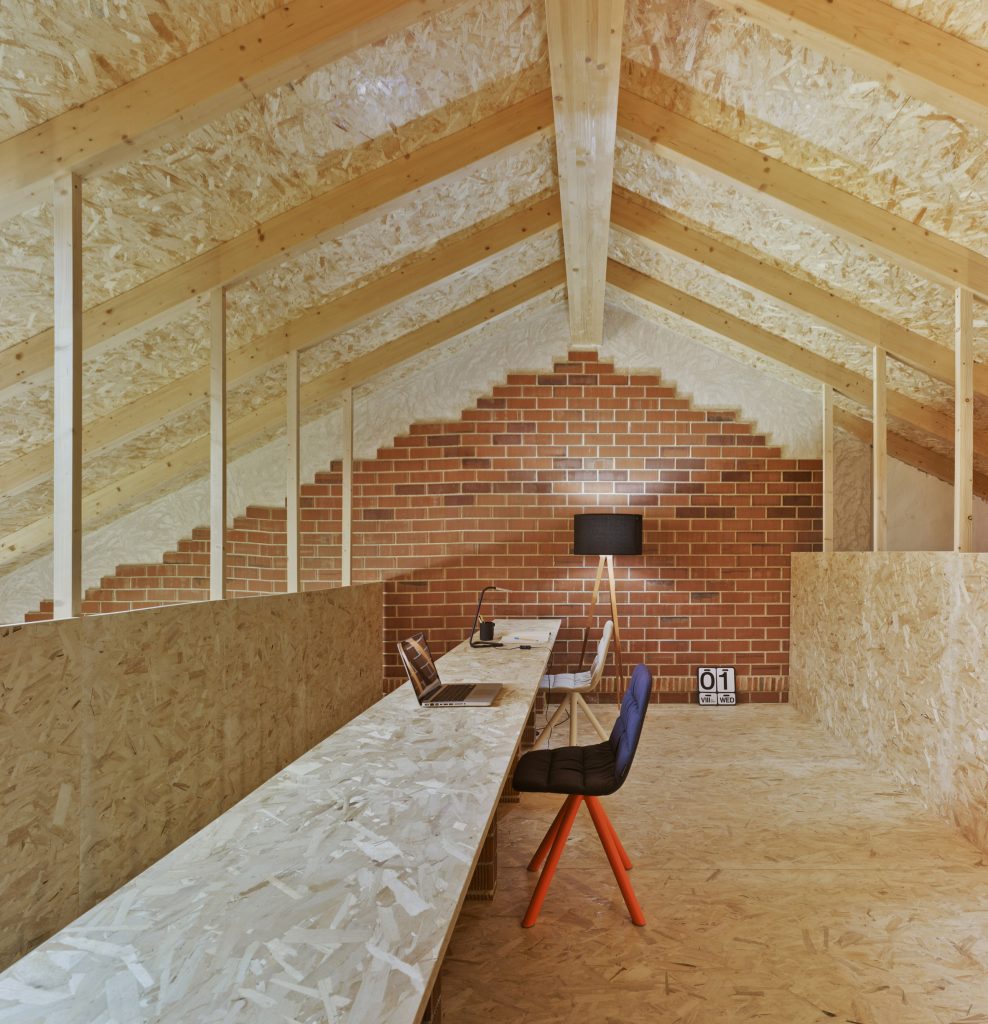
Casa Mac by La Errería in Alicante
Up a final flight of stairs, a plywood-framed study nestles under the roof’s exposed eaves. Built-in desks stretch along one side of this treehouse-style half room, which overlooks the space with a half wall.
The raw orientated strand board provides in Casa Mac a background against which colourful accents pop up in the form of furniture pieces.
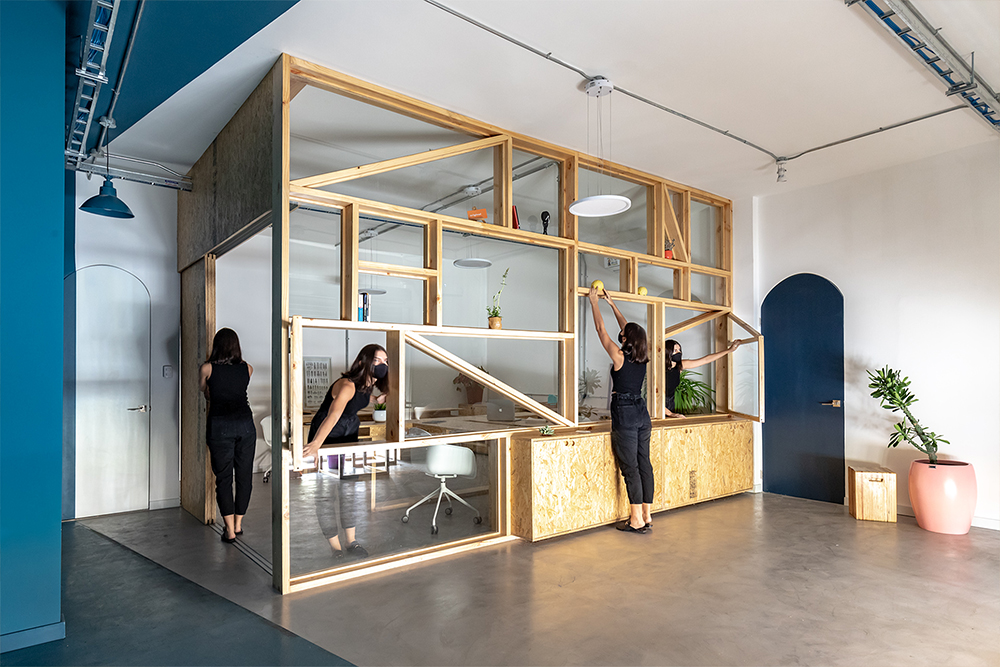

Oriented Fibers by Juan Alberto Andrade and María José Váscones (also header image)
Local architects Juan Alberto Andrade and María José Váscones have used OSB panels to create a private area to host meetings within an open office of the technology services company Mendotel in Guayaquil, Ecuador.
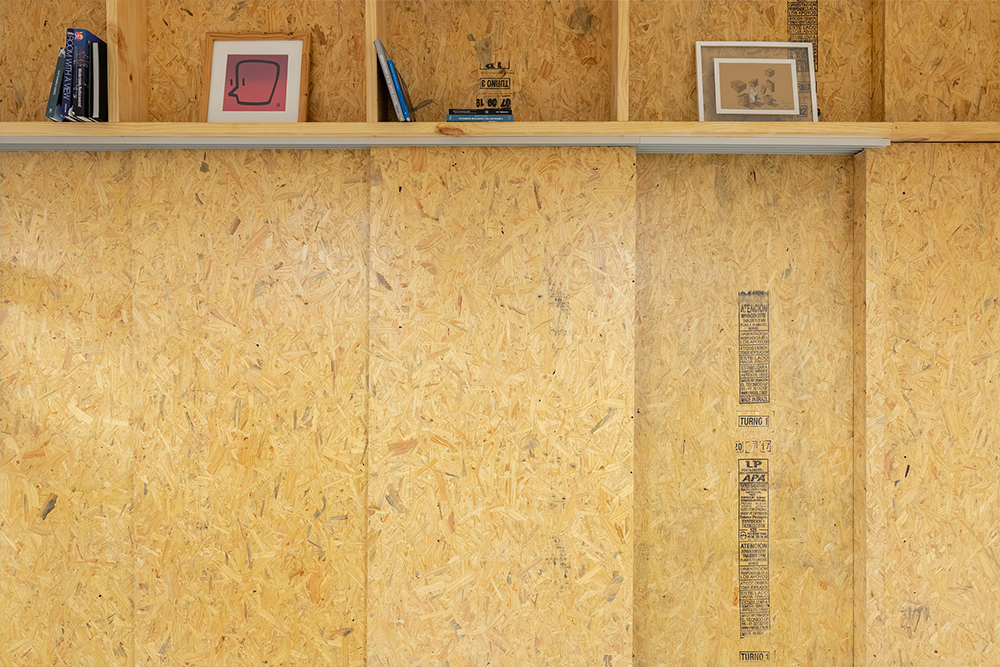
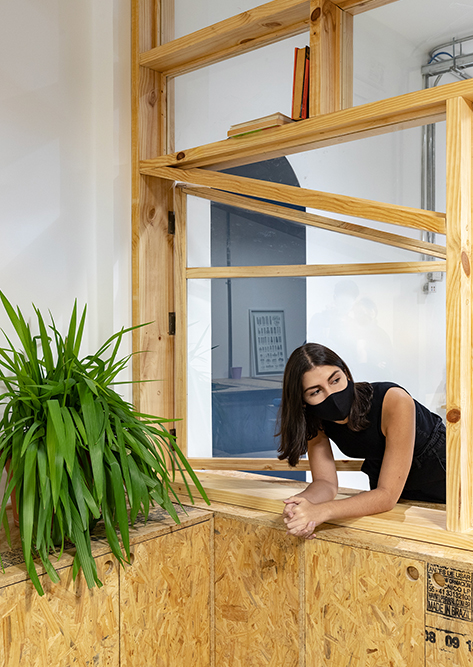
Oriented Fibers by Juan Alberto Andrade and María José Váscones
The architects analysed the work dynamics and designed a workspace with different levels of privacy. With a reduced space, the reticulated shelf was partitioned with glass divisions from floor to ceiling, which provides solid privacy but allows visual permeability throughout the place, creating a new interior façade.

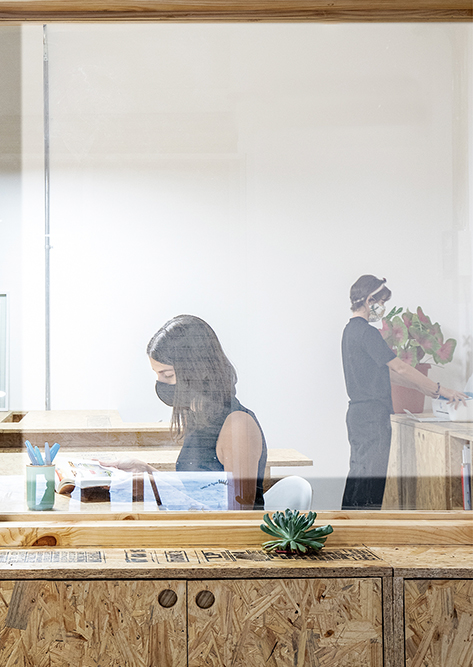
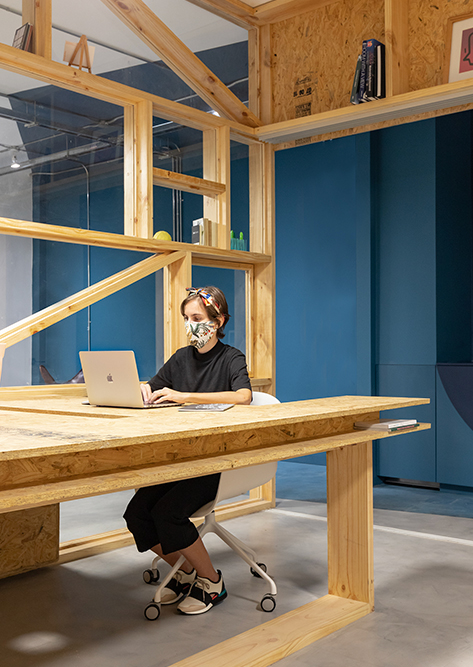
Oriented Fibers by Juan Alberto Andrade and María José Váscones
One of the two OSB walls has angular pine window frames that can be used as shelves, while the other one includes a large sliding door that can be used to open up the office, as well as the fixed desks inside, making the space more flexible.
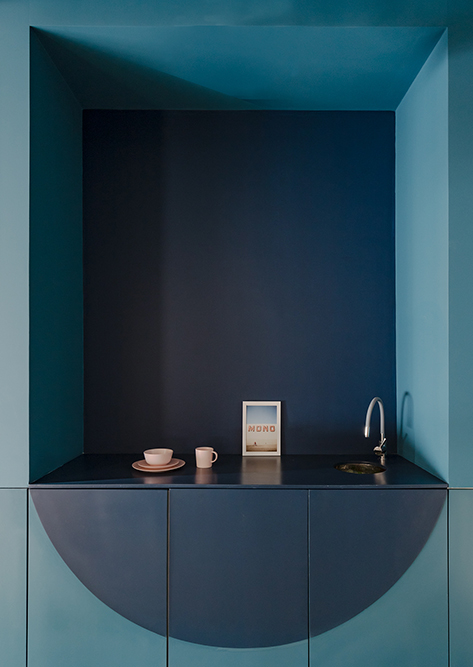
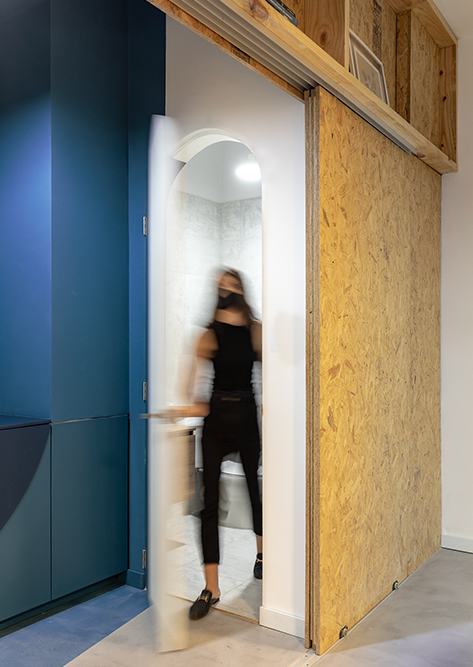
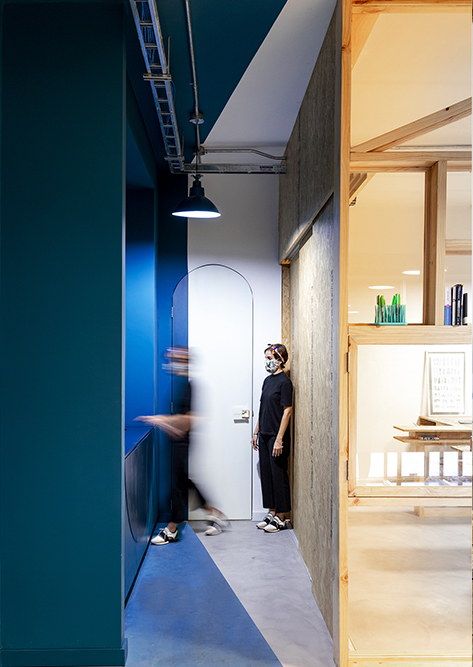
Oriented Fibers by Juan Alberto Andrade and María José Váscones
The area for meetings and work is visually separated from the service area that includes bathroom, cafe bar and showroom. While the former is characterized by the raw structure of the orientated strand board, white paint and angular lines of the windows, the latter contrastingly is defined by dark blue paintwork and curved shapes. Paint also extends at an angle over the cement floors to mark a seating area.
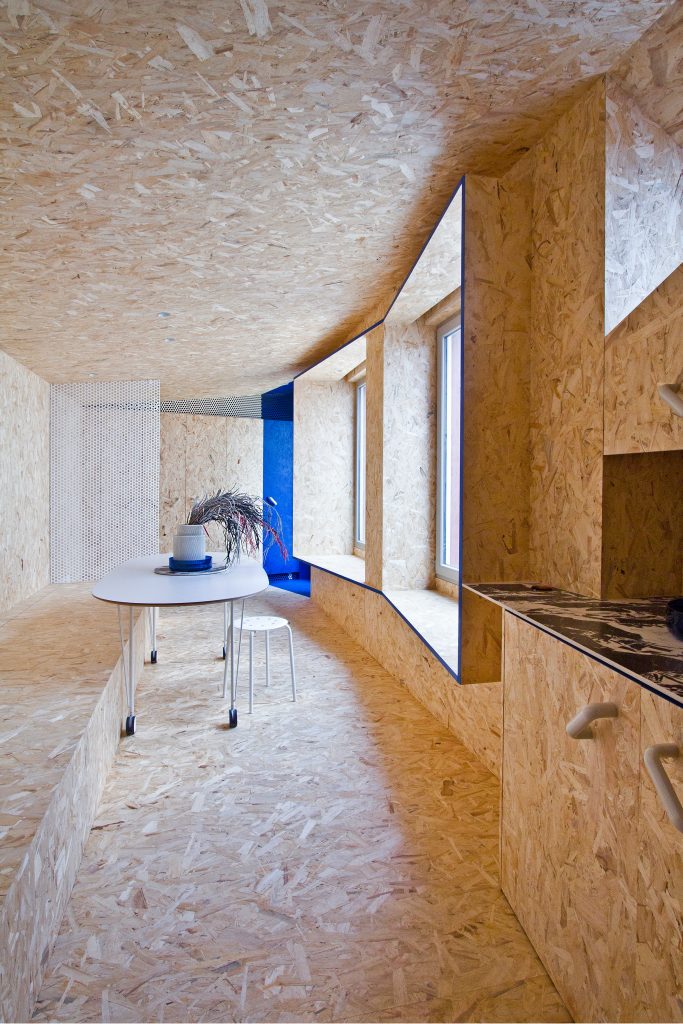
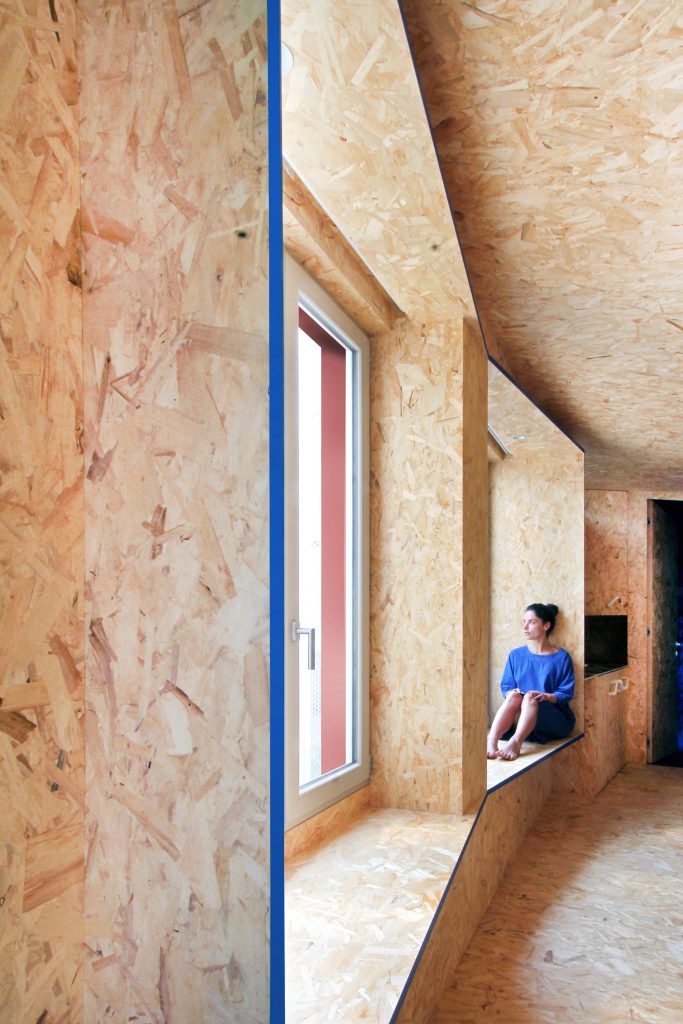
Urban Cabin by Francesca Perani
Using OSB panels, Italian architect and designer Francesca Perani has transformed the porch of a house in Albino, a small town in the Italian province of Bergamo, into a 25sqm apartment smartly named Urban Cabin. To make the residence suitable for a number of purposes (such as a workspace, a guestroom or potentially a place for the owners’ grown-up children to move in), the designer planned it to be as flexible as possible, with plenty of storage, notwithstanding the apartment’s limited dimensions.
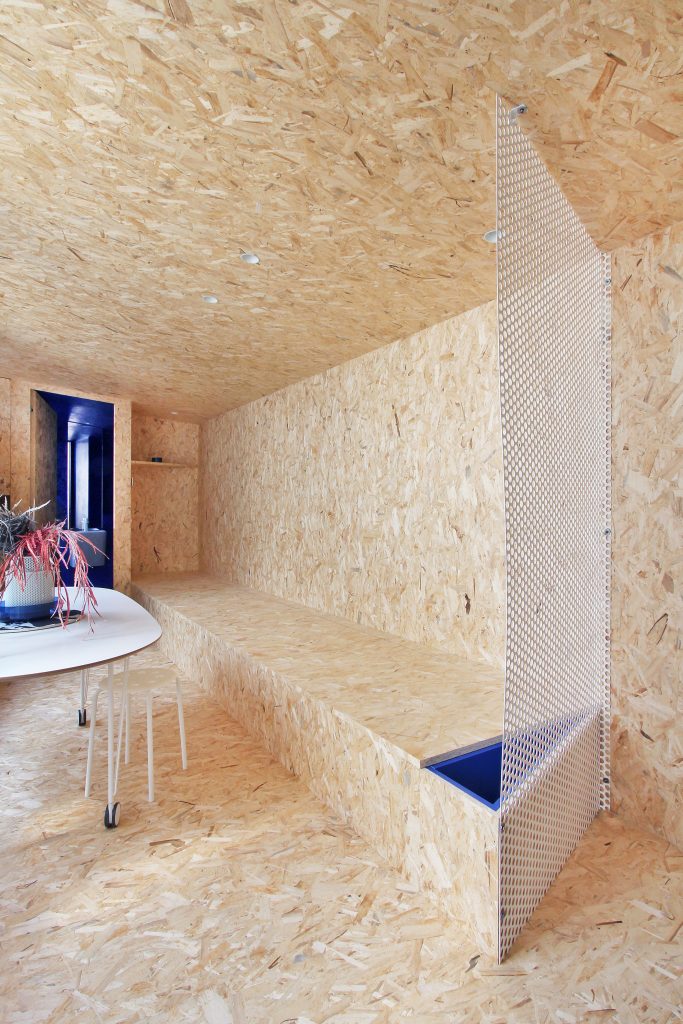

Urban Cabin by Francesca Perani
Perani has chosen an open-plan layout for the living space to make it feel spacious and optioned for OSB for all surfaces and objects here. The multifunctional furniture pieces are custom-made and feature storage areas to make the most of the space. This includes window boxes that double as seats and a long daybed/storage chest, as well as wardrobes beside the entrance, which conceal the heating system and washing machine, but also accommodate a study desk.

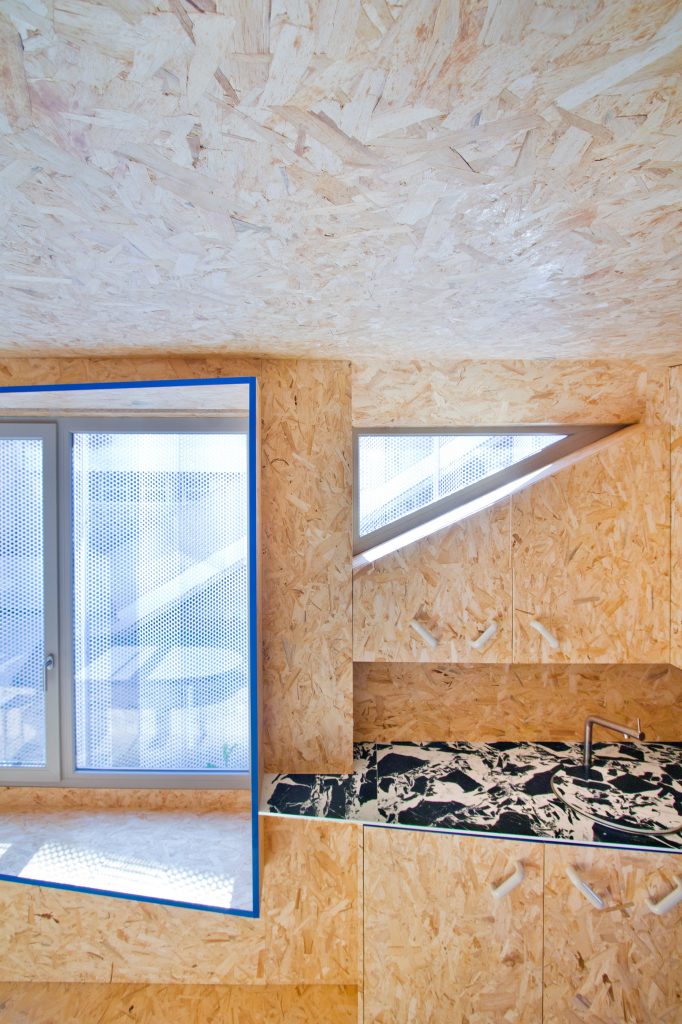
Urban Cabin by Francesca Perani
The use of OSB panels in Urban Cabin provides the residence with a sense of warm comfort, while its fluid continuous pattern makes the space feel bigger, with one texture utilized for floor, walls and all the surfaces. Details are painted in royal blue, the same colour used in the generously sized bathroom, while the kitchen worktop features a monochrome print designed to resemble marble.

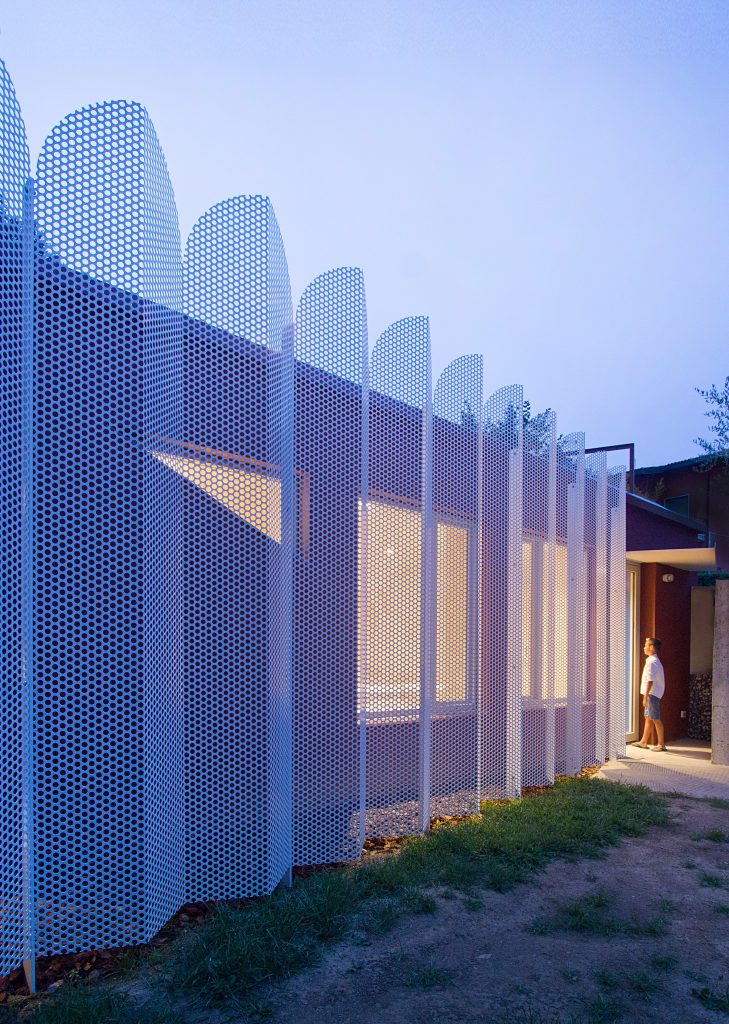
Urban Cabin by Francesca Perani
Outside, folded sheets of perforated metal create a series of arches in front of the home, acting a sun shade, in lieu with Perani’s ambition to experiment in order to make the space more emotionally involving.